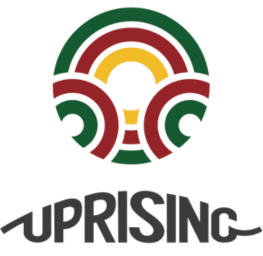
10 Sep The science of recovery for athletes and high performers
In training, effort is the part that gets celebrated — the sweat-drenched shirt, the heavy lifts, the finish line photo. Yet the real transformation happens in the quiet hours after the work is done. Recovery is not the absence of training; it’s the other half of the equation. Without it, intensity becomes erosion instead of progress. For athletes and high performers, recovery is where adaptation, resilience, and longevity are built — and science shows that neglecting it is one of the fastest routes to plateau or burnout.
At Uprising, we treat recovery with the same precision and intent as training itself. It’s not optional downtime. It’s the place where you become stronger than you were the day before.
The physiology of recovery: stress, adaptation, and growth
Every serious training session is a controlled stress event. Muscles are broken down through microtears, glycogen — the body’s stored energy — is depleted, and the nervous system is kicked into high alert. This is the stimulus. But the gain, the actual improvement in strength, speed, and capacity, only arrives if the body has the right conditions to adapt to that stress.
That adaptation process involves complex biochemical shifts. Damaged muscle fibers are rebuilt thicker and stronger through protein synthesis. The cardiovascular system improves efficiency as it replenishes oxygen stores and clears waste products. The nervous system recalibrates, learning to fire muscles faster and more efficiently. None of this can happen without targeted recovery — skip it, and the body is still repairing yesterday’s session when you demand performance today, compounding fatigue and risk of injury.
Sleep: the architect of adaptation
If there’s one non-negotiable in recovery, it’s sleep. During slow-wave sleep, growth hormone is released in surges, driving tissue repair and muscle growth. REM sleep, on the other hand, consolidates motor learning — meaning the skills you trained during the day are wired into your nervous system at night. The link between sleep and performance is so strong that research in Sleep journal found that increasing athletes’ nightly sleep to 9–10 hours improved sprint times, reaction speed, and overall mood.
For high performers, sleep debt is particularly dangerous. Less than seven hours a night reduces glycogen storage, slows recovery from inflammation, and disrupts hormonal balance — impairing both endurance and strength output. At Uprising, we treat sleep not as passive rest, but as the most powerful performance tool available.
Active recovery: movement as medicine
The instinct after a brutal session can be to collapse and avoid movement altogether. Yet complete stillness can slow recovery by restricting circulation, keeping nutrients and oxygen from reaching damaged tissues. Active recovery — light movement like walking, swimming, or cycling — stimulates blood flow without adding further strain, helping clear metabolic waste such as lactate and reducing stiffness.
The key is intensity: the movement must be easy enough to lower heart rate while still engaging the muscles. For Uprising athletes, these sessions are framed as “training for the recovery system” — not wasted time, but an active investment in how well tomorrow’s session will go.
Heat, cold, and compression: tools for strategic recovery
Targeted recovery tools can accelerate specific phases of adaptation, but their benefits depend on how they’re used. Cold water immersion (CWI) — from ice baths to ocean swims — reduces short-term inflammation and muscle soreness by constricting blood vessels and slowing metabolic activity in damaged tissues. While it may blunt certain long-term muscle-building signals if overused immediately after strength work, CWI can be invaluable in tournament settings or during back-to-back training days.
Heat exposure, through saunas or hot baths, works in the opposite way — increasing blood flow, relaxing tight muscles, and stimulating heat shock proteins that protect and repair cells. Compression garments, meanwhile, apply graduated pressure to the limbs, aiding venous return and reducing swelling. At Uprising, we integrate these methods selectively, not as shortcuts, but as targeted enhancements layered on top of foundational recovery habits.
The often-neglected mental recovery
Recovery isn’t only about muscles and joints — it’s also about restoring the mind. Mental fatigue degrades reaction times, impairs decision-making under pressure, and increases the perception of effort during physical activity. Techniques like mindfulness, controlled breathing, and deliberate detachment from performance settings can reset the nervous system and restore cognitive sharpness.
High performers often mistake mental recovery for laziness, but at Uprising, we know that mental sharpness is a physical advantage. A mind running at full bandwidth reacts faster, stays calmer under pressure, and translates preparation into performance.
The discipline to recover
Recovery isn’t the reward for training — it is the training. It’s in the rest phase that strength is built, skills are embedded, and the body adapts to stress. Without it, all the effort in the world leads to stagnation. With it, progress compounds. At Uprising, we make recovery a discipline, not an afterthought, because we know it’s the hidden arena where champions are made.





No Comments